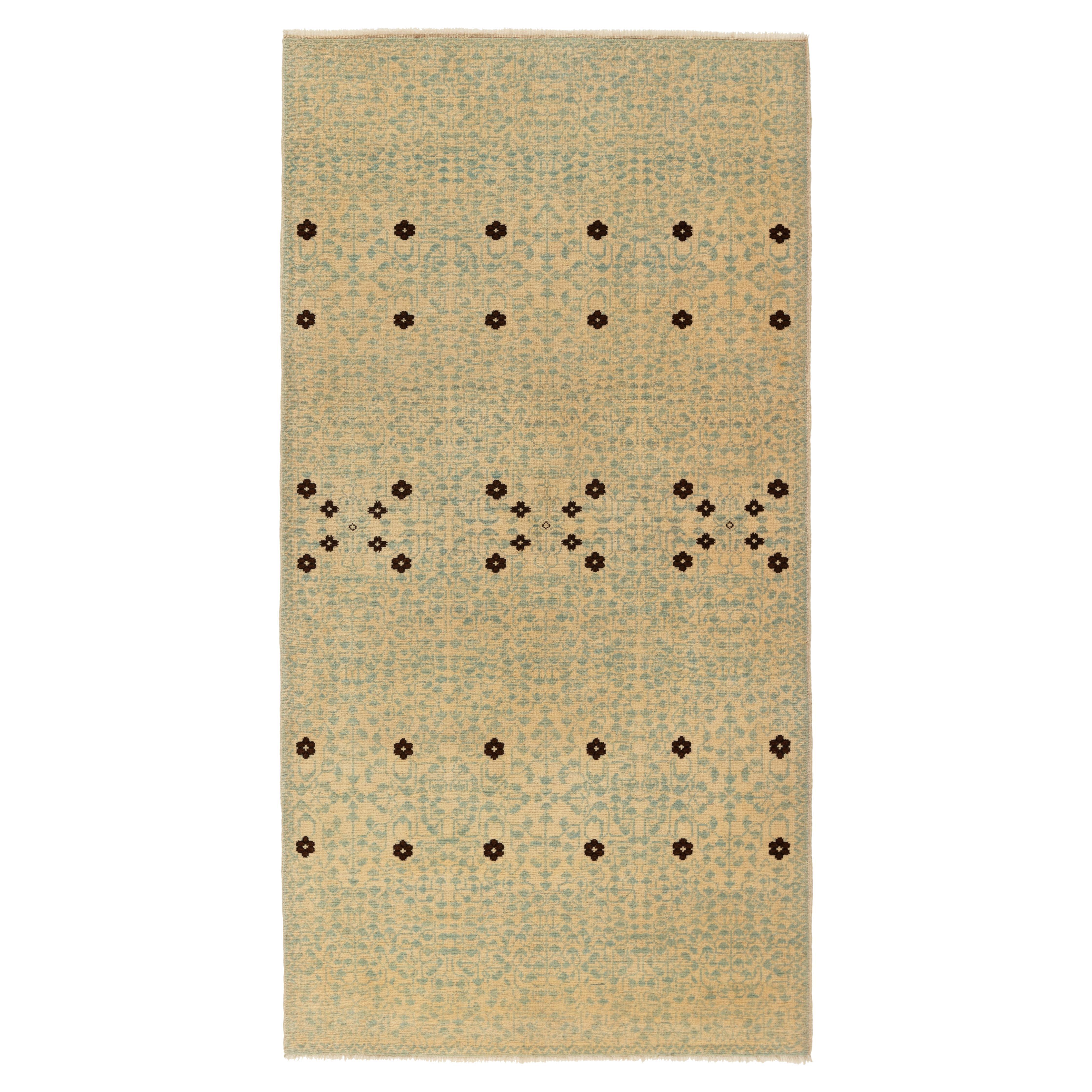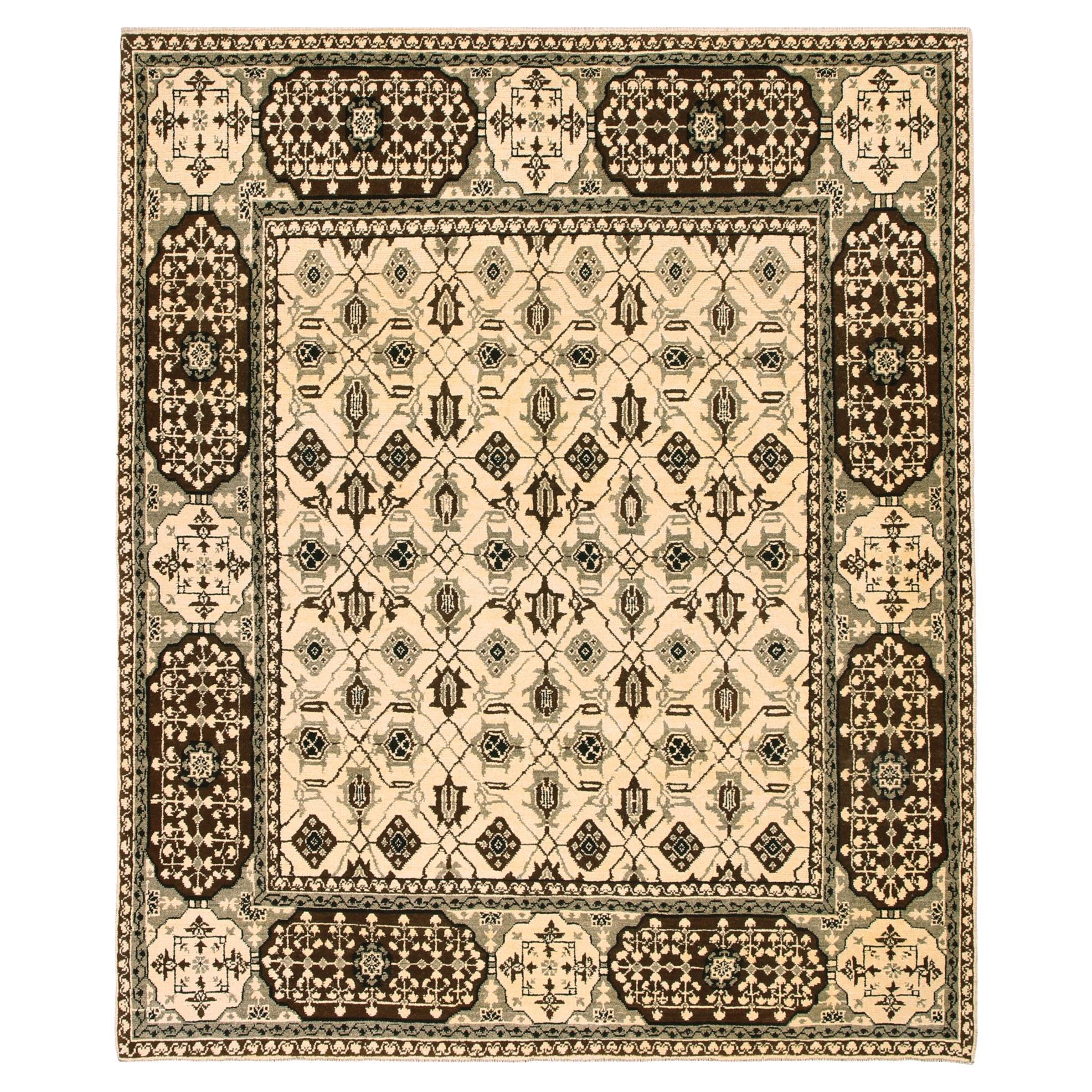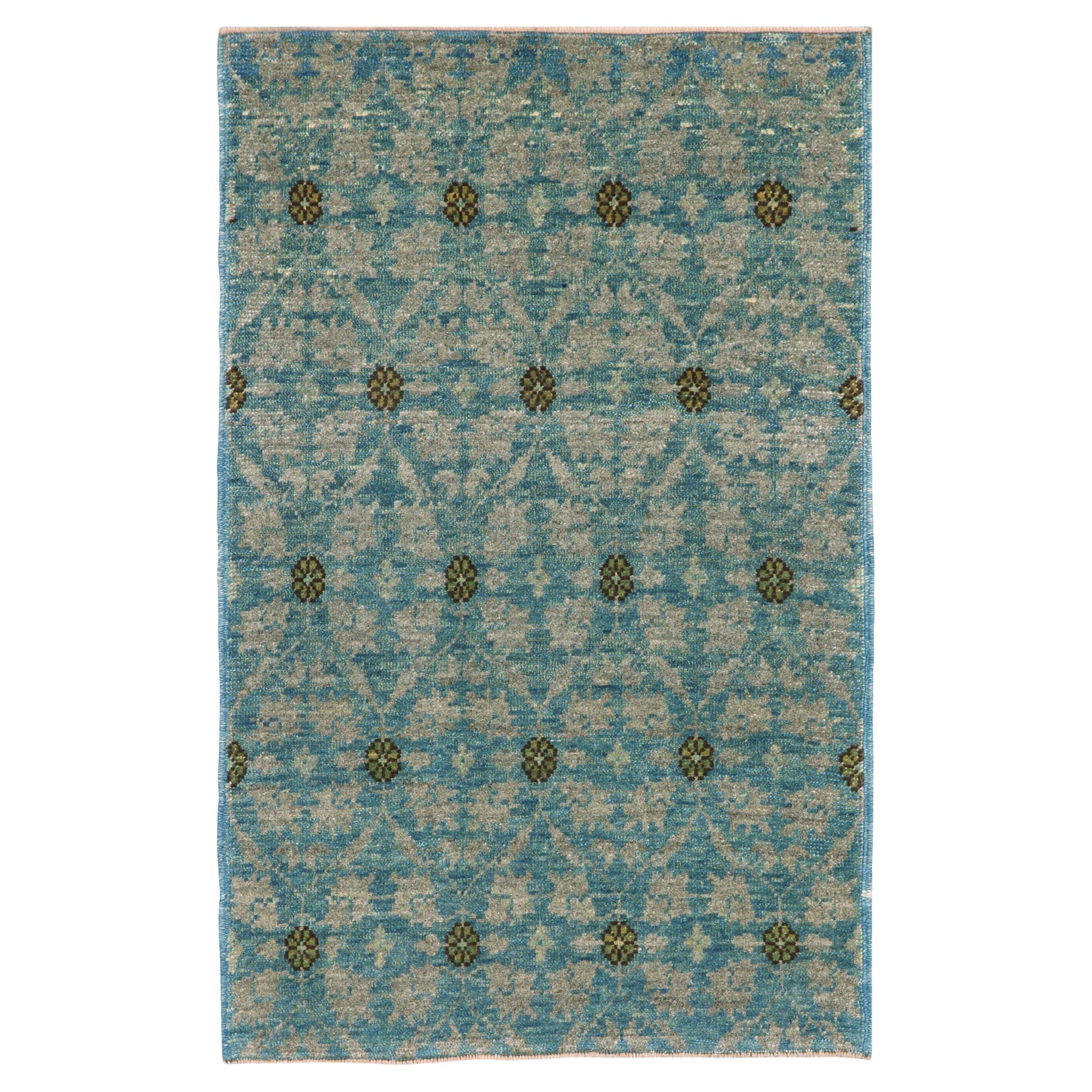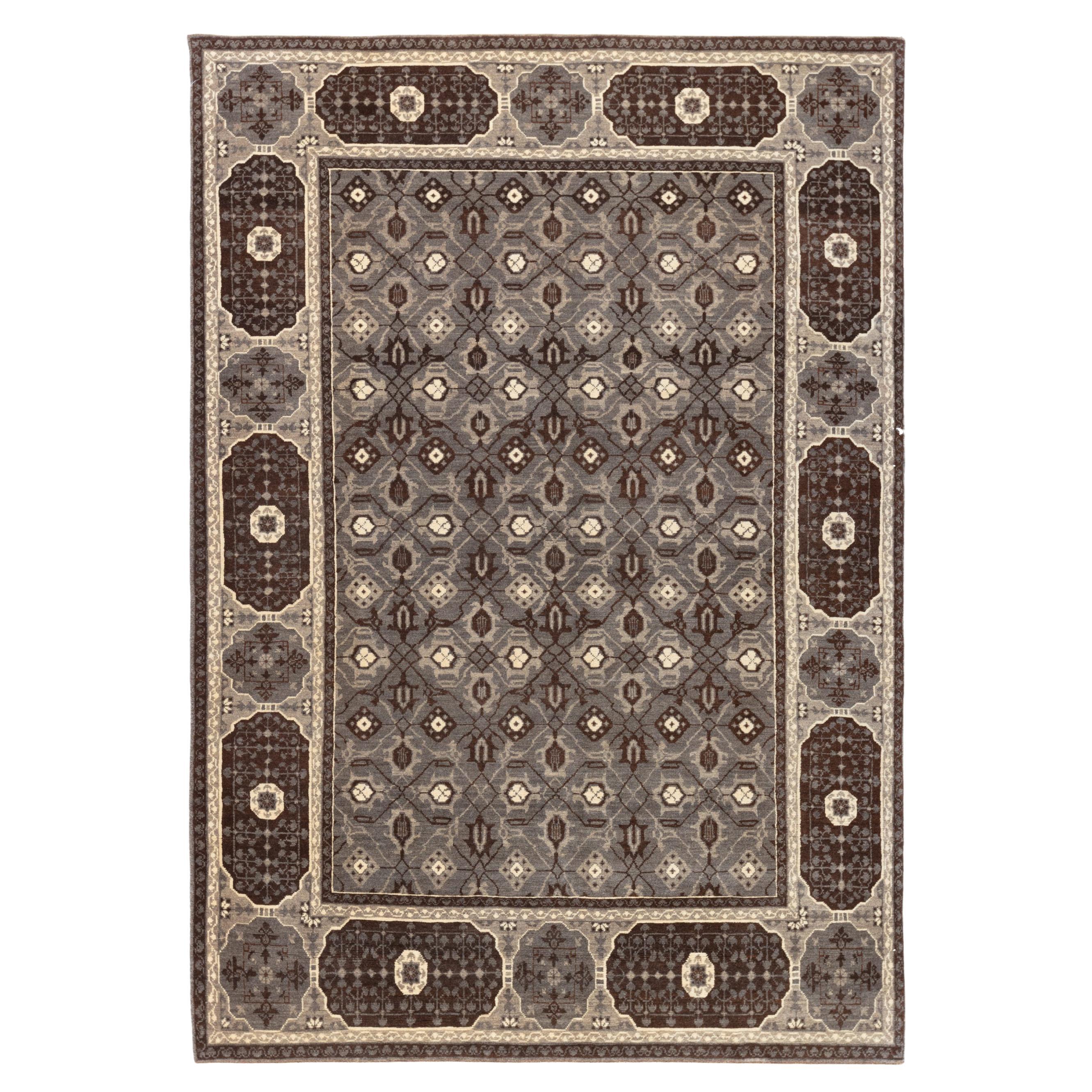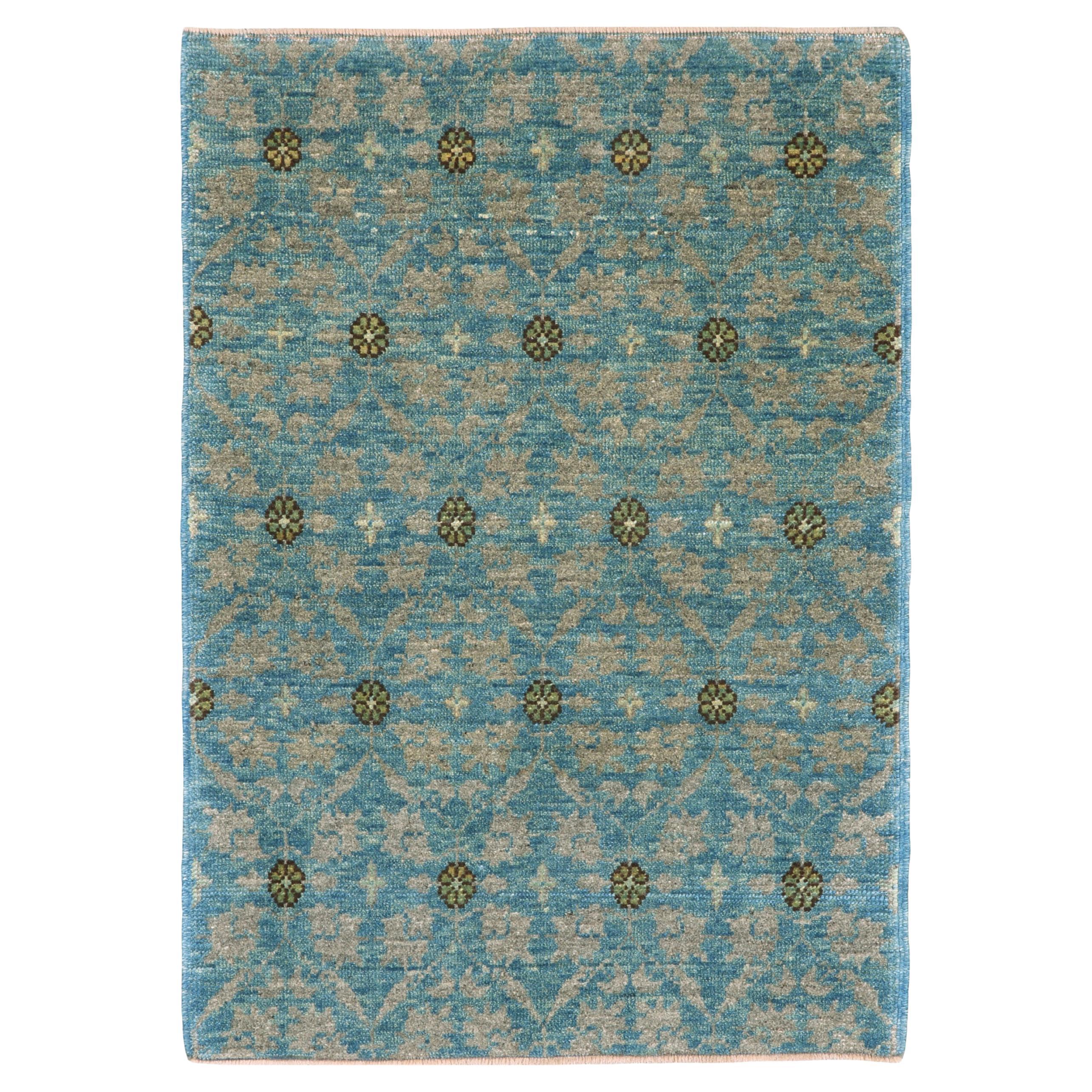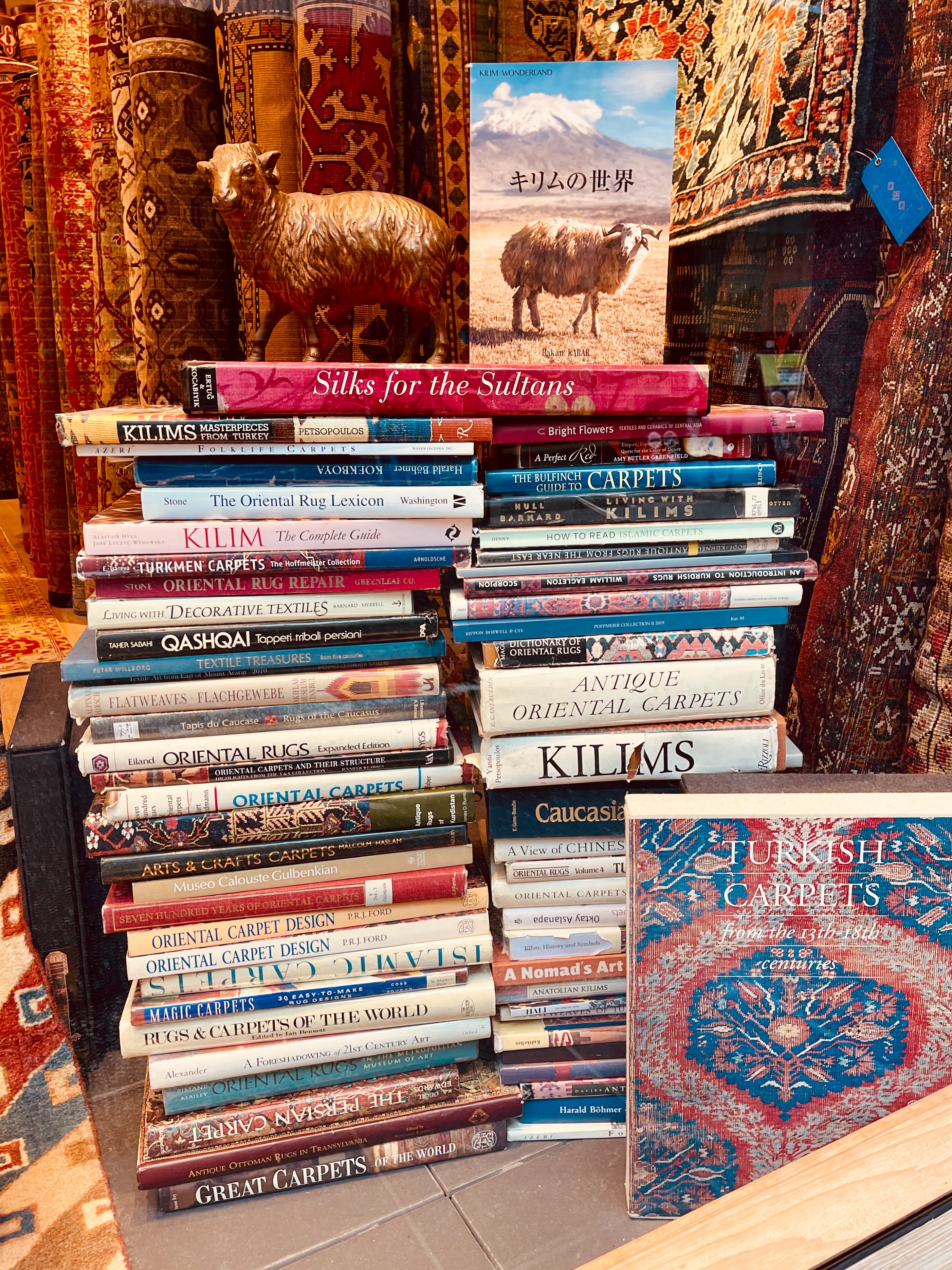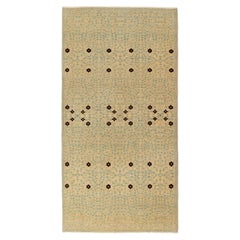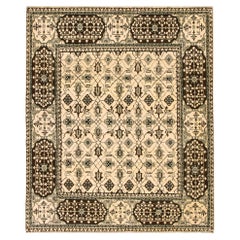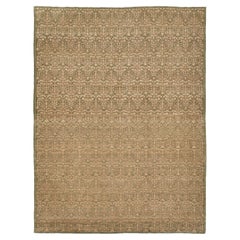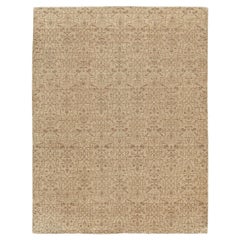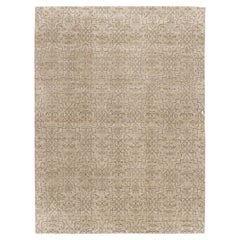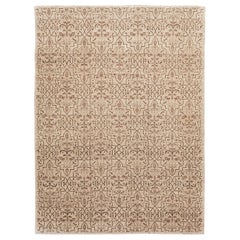Items Similar to Ararat Rugs Mamluk Modern Rug with Leaf Lattice Design, Revival Rug Natural Dyed
Want more images or videos?
Request additional images or videos from the seller
1 of 7
Ararat Rugs Mamluk Modern Rug with Leaf Lattice Design, Revival Rug Natural Dyed
$2,150
£1,643.79
€1,893.31
CA$3,012.81
A$3,363.52
CHF 1,762.43
MX$41,172.76
NOK 22,382.92
SEK 21,104.25
DKK 14,129.99
Shipping
Retrieving quote...The 1stDibs Promise:
Authenticity Guarantee,
Money-Back Guarantee,
24-Hour Cancellation
About the Item
The source of the rug comes from the book Völker, Angela, Die orientalischen Knüpfteppiche das MAK, Vienna: Böhlau, 2001: 42–5. This rug with the central star was designed in the early 16th-century rug by Mamluk Sultane of Cairo, Egypt. It is exhibited at MAK – Museum of Applied Arts, Vienna Austria. As its impressive size, materials, and design quality suggest, the carpet is a product of an accomplished court workshop and likely dates from the late period of the last Mamluk dynasty. The quantity of the colors used speaks for an earlier date around 1500; the delicate vegetal border with leaf tendrils and the characteristic umbrella leaves rather point to a later date. In 1517, the Ottomans conquered the Mamluk Empire, but Cairo’s carpet workshops still produced pieces until the mid-16th century in a post-Mamluk style. Attempting to read early carpets produced in workshops in Cairo provides an entirely different set of challenges. Cairene carpets, distinguished by their limited color palette, symmetrical knotting, and unusual construction of S-spun wool (Z-spun wool being the norm almost everywhere in the Islamic world), underwent a sudden change in design sometime after the Ottoman Turks conquered the Mamluk Empire in 1517. The Simonetti Carpet was probably woven after the conquest but exhibits the "old" fifteenth-century style of the Mamluks. Long and narrow, it was woven on a standard-sized Egyptian roller-beam loom, capable of producing carpets of varying lengths. It consists of five major focal areas of design in an A-B-C-B-A pattern, meaning the first and fifth and the second and fourth areas are paired, while the middle is unique. We can easily term these five focal areas medallions, but they are geometric in both layout and detail, and their style (as opposed to the actual date of the weaving) predates the carpet design revolution that gave rise to the medallion format. We can surmise that the designs and colors of Mamluk carpets, with their unusual combination of insect-derived red, blue, green, and sometimes yellow, with virtually no undyed white at all, constitute an effort to create a recognizable brand in the early modern market, especially in Europe, where Mamluk carpets such as this, with their subtle coloration, incredibly detailed design, and mosaic-like layout of small and intricately patterned geometric motifs, constituted an appealing alternative to the more coarsely woven and brightly colored carpets from Anatolia, such as Ushak medallion carpets. While the weaving of carpets in the traditional geometric Mamluk designs apparently continued well into the seventeenth century, sometime around the mid-sixteenth century, Cairene weavers began to create an entirely new kind of carpet, using their traditional Mamluk materials, technique, and coloration but reflecting the latest styles then being created at the court of the Ottoman sultans in Istanbul. The design of the rug is interpreted by our designers, soft colors are used for this rug.
Color summary: 4 colors in total; (All natural colors, no dye)
Natural Wool Color 320 (Specially Washed, No Dye - Sheep’s Color)
Burnt Coffee 102 (Only Specially Washed, No Dye - Sheep’s Color)
Natural Wool Color 37 (Specially Washed, No Dye - Sheep’s Color)
Dark Brown 316 (No Dye - Sheep’s Own Color)
Group: Islamic Rugs Family
Area: Mamluk
Material of Pile: Natural Dyed Hand-spun Wool
Material Warp / Weft: Wool on Wool
Structure: Symmetrical knot on depressed warp inclining to the right
Knots Density: 39x39
Production Place: Diyarbakir
Weight: 5.70kg
Location: Istanbul
Dimensions:
2 ft 9 in x 6 ft 11 in ( 86cm x 211cm )
- Creator:Ararat Rugs (Manufacturer)
- Dimensions:Width: 33.86 in (86 cm)Length: 83.08 in (211 cm)
- Style:Revival (In the Style Of)
- Materials and Techniques:
- Place of Origin:
- Period:
- Date of Manufacture:2022
- Production Type:New & Custom(One of a Kind)
- Estimated Production Time:Available Now
- Condition:
- Seller Location:Tokyo, JP
- Reference Number:1stDibs: LU8206241784922
ARARAT RUGS
We know and believe that the geography we come from, our past, and our lifestyle are the most important bond between us to carry the oriental carpet art and culture to the next generations along with our core values in our ongoing growth journey.
We are aware that the way to achieve this goal and carry this priceless art and culture to the future depends on a lot of work with all our people every day while adhering to our core values.
For us, art is meaningful in the sense that it brings together various cultures around the world. It is an honor for us that oriental carpet art and culture have been instrumental in this for centuries and that we are a part of this business.
We are tirelessly keeping an eye on auction house information around the world about carpets. New York's Metropolitan, London's Victoria & Albert Museums, and other famous art museums, as well as small specialized museums that house private collections, and books about oriental carpets to collect information on outstanding carpet designs and patterns from around the world. It's our Self-improving and Self-developing culture.
As Turkish Culture of Hospitality, the Kurdish Culture of Generosity, and as Japanese Culture of Business Punctuality; are the most important values that this multicultural background has taught and bequeathed to us. It is essential and valuable for us that you feel this feeling not only by looking at our oriental carpets but from the moment you contact us.
About the Seller
5.0
Platinum Seller
Premium sellers with a 4.7+ rating and 24-hour response times
Established in 1970
1stDibs seller since 2023
55 sales on 1stDibs
Typical response time: 3 hours
- ShippingRetrieving quote...Shipping from: Tokyo, Japan
- Return Policy
Authenticity Guarantee
In the unlikely event there’s an issue with an item’s authenticity, contact us within 1 year for a full refund. DetailsMoney-Back Guarantee
If your item is not as described, is damaged in transit, or does not arrive, contact us within 7 days for a full refund. Details24-Hour Cancellation
You have a 24-hour grace period in which to reconsider your purchase, with no questions asked.Vetted Professional Sellers
Our world-class sellers must adhere to strict standards for service and quality, maintaining the integrity of our listings.Price-Match Guarantee
If you find that a seller listed the same item for a lower price elsewhere, we’ll match it.Trusted Global Delivery
Our best-in-class carrier network provides specialized shipping options worldwide, including custom delivery.More From This Seller
View AllArarat Rugs Mamluk Modern Rug with Leaf Lattice Design, Revival Rug Natural Dyed
By Ararat Rugs
Located in Tokyo, JP
The source of carpet comes from the book Völker, Angela, Die orientalischen Knüpfteppiche das MAK, Vienna: Böhlau, 2001: 42–5. That rug with the central star was designed in the earl...
Category
21st Century and Contemporary Turkish Revival Turkish Rugs
Materials
Wool, Natural Fiber, Organic Material
$2,000 Sale Price
20% Off
Free Shipping
Ararat Rugs Mamluk Carpet with Lattice Design, Natural Sheep Wool Colors No Dye
By Ararat Rugs
Located in Tokyo, JP
The source of the carpet comes from the Mercer Collection Sotheby’s 2000 (catalog cover). This Mamluk-Cairene carpet is known, curiously featuring some t...
Category
21st Century and Contemporary Turkish Revival Turkish Rugs
Materials
Wool, Natural Fiber, Organic Material
Ararat Rugs Mamluk Wagireh Rug with Palmette Lattice Revival Carpet Natural Dyed
By Ararat Rugs
Located in Tokyo, JP
This rug has an interpreted design composed of a palmette lattice pattern taken from a part of the Mamluk rug, filling the field elegantly. These kinds of rugs have often been descri...
Category
21st Century and Contemporary Turkish Revival Turkish Rugs
Materials
Wool, Natural Fiber, Organic Material
Ararat Collection, Mamluk Wagireh Rug with Flower Lattice Natural Dyed Carpet
By Ararat Rugs
Located in Tokyo, JP
The source of carpet comes from the book Völker, Angela, Die orientalischen Knüpfteppiche das MAK, Vienna: Böhlau, 2001: 42–5. This rug with the central star was designed in the early 16th-century rug by Mamluk Sultane of Cairo, Egypt. It is exhibited at MAK – Museum of Applied Arts, Vienna Austria. The interpreted design is composed of a flower lattice pattern taken from a part of the MAK Museum’s rug...
Category
21st Century and Contemporary Turkish Revival Turkish Rugs
Materials
Wool, Natural Fiber, Organic Material
Ararat Rugs Mamluk Carpet with Lattice Design, Natural Sheep Wool Colors No Dye
By Ararat Rugs
Located in Tokyo, JP
The source carpet comes from the Mercer Collection Sotheby’s 2000 (catalog cover). This Mamluk-Cairene carpet, curiously featuring some type of lattice, ...
Category
21st Century and Contemporary Turkish Revival Turkish Rugs
Materials
Wool, Natural Fiber, Organic Material
Ararat Rugs Mamluk Wagireh Rug with Flower Lattice Design Natural Dyed Carpet
By Ararat Rugs
Located in Tokyo, JP
The source of carpet comes from the book Völker, Angela, Die orientalischen Knüpfteppiche das MAK, Vienna: Böhlau, 2001: 42–5. This rug with the central star was designed in the early 16th-century rug by Mamluk Sultane of Cairo, Egypt. It is exhibited at MAK – Museum of Applied Arts, Vienna Austria. The interpreted design is composed of a flower lattice pattern taken from a part of the MAK Museum’s rug...
Category
21st Century and Contemporary Turkish Revival Turkish Rugs
Materials
Wool, Natural Fiber, Organic Material
You May Also Like
Natural Dye Transitional Rug Design Bliss Collection
By Mehraban Rugs
Located in WEST HOLLYWOOD, CA
A meticulously hand-spun wool transitional design revival from our most sought-after collection has come and flexed its versatility. Stylized motifs and subtle crisscross outlines i...
Category
21st Century and Contemporary Afghan Central Asian Rugs
Materials
Wool
$4,000 Sale Price
41% Off
Mehraban Natural Dye Transitional Rug Design D5159 Divine
Located in WEST HOLLYWOOD, CA
This elegant and timeless Transitional type of rug made from vegetable dye has an intricate symmetric pattern and has clear grandiose medallions all over the design. The details of t...
Category
2010s Afghan Central Asian Rugs
Materials
Wool
$3,920 Sale Price
60% Off
Mehraban Natural Dye Transitional Rug Design D5159 Divine
By Mehraban Rugs
Located in WEST HOLLYWOOD, CA
This elegant and timeless Transitional type of rug made from vegetable dye has an intricate symmetric pattern and has clear grandiose medallions all over the design. The details of t...
Category
2010s Afghan Central Asian Rugs
Materials
Wool
Mehraban Natural Dye Transitional Rug Design D5159 Divine
By Mehraban Rugs
Located in WEST HOLLYWOOD, CA
Rug Number
11989
Size
8' 11" X 12' 3"
Design
D5159
Collection
Traditional Re-Creations
Material
Wool
Texture
Pile Weave
Origin
Afghanistan
Age
New
Category
2010s Afghan Central Asian Rugs
Materials
Wool
$3,250 Sale Price
50% Off
Mansour Handwoven Flat Weave Lattice Rug
Located in West Hollywood, CA
Part of the Mansour Modern collection, this flatweave rug is handwoven by master weavers using the finest quality techniques and materials.
Category
2010s Indian North and South American Rugs
Materials
Wool
Modern Tribal Natural Wool Rug 8'9''x12'1''
By Amara Rugs
Located in Torrance, CA
This exceptional hand-knotted wool rug showcases a striking, intricate geometric maze pattern that combines traditional craftsmanship with contemporary design sensibilities. Measurin...
Category
21st Century and Contemporary Pakistani Modern Central Asian Rugs
Materials
Wool
$6,480 / item
More Ways To Browse
Empire Vienna
Star Ottoman
Unusual Ottoman
Turkish Coffee Set
Black Leather Poufs
Bleached Oak Table
Brass Legs Stool
Drink Trolley
Entryway Seat
Gold Ormolu Glass
Ladder Back Chairs
Meissen Porcelain Flowers
Mid-Century Modern Cane Dining Room Chairs
Pencil Reed Furniture
Rococo Chair
Silver Bar Carts
Sofa Vintage Mid Century Green
Solid Oak Round Coffee Table
